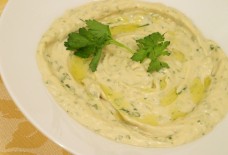A Brief Introduction to Qumran and the Dead Sea Scrolls
The Dead Sea Scrolls, courtesy of The GuardianBy: Emily Tain/Arab America Contributing Writer
The legitimacy of Ta’amirah’s story is debated: did he just happen to stumble upon the scrolls, or was he going treasure hunting and hit the jackpot? In either case, Ta’amirah sold the scrolls to an antiques dealer that went by “Kando,” who then sold the scrolls to two other collectors. Four of the seven went to a man called Metropolitan Samuel – he got the Great Isaiah, Rule of the Community, Genesis Apocryphon, and Habakkuk Pesher scrolls. Sam went on to try and sell these scrolls in a New York Times advertisement. Luckily, they were not purchased, but kept in a monastery to later be evaluated and confirmed as authentic. Kando sold the other three scrolls – Little Isaiah, War Scroll, and Hymn Scroll – to a Hebrew University professor named Eleanor Sukenik.
Background
Caves in Qumran, courtesy of Biblical Archaeology SchoolMuhammad Edh-Dhib “the Wolf” Ta’amirah first found the scrolls between 1946 and 1947 along with his cousin and a friend. Part of a Bedouin tribe in the area, Ta’amirah reported that he was throwing stones in order to herd his goats when he threw one into an open cave on a hillside. The cave contained a myriad of jars, but only seven jars contained full scrolls. It was not until later, when Jordanian archaeologists went to the site, that the hundreds of other scrolls were found.
The legitimacy of Ta’amirah’s story is debated: did he just happen to stumble upon the scrolls, or was he going treasure hunting and hit the jackpot? In either case, Ta’amirah sold the scrolls to an antiques dealer that went by “Kando,” who then sold the scrolls to two other collectors. Four of the seven went to a man called Metropolitan Samuel: Great Isaiah, Rule of the Community, Genesis Apocryphon, and Habakkuk Pesher. Sam went on to try and sell these scrolls in a New York Times advertisement. Luckily they were not purchased, but kept in a monastery to later be evaluated and confirmed as authentic. Kando sold the other three scrolls -Little Isaiah, War Scroll, and Hymn Scroll- to a Hebrew University professor named Eleanor Sukenik.
While most of the scrolls were written in Hebrew, 17% were written in Aramaic and 3% in Greek. Aramaic is a semitic language that originated in ancient Syria that is the grandfather of both Hebrew and Arabic. It is for this reason that many Hebrew and Arabic words are the same, or at least very similar. The decent amount of Aramaic Dead Sea Scrolls reflects the time period in which Aramaic was the lingua franca over Hebrew.
The Essenes and Abrahamic Religions
Despite being a Jewish document in origin, some of the content in the Dead Sea Scrolls can be seen in Christianity and Islam as well. For example, some scholars believe that the Essenes “…prepared for the arrival of the messiah,” whom Christians cite as Jesus Christ. Additionally, John the Baptist spent a considerable amount of time near Qumran and both Christians and the Essenes refer to “a voice in the wilderness” (Isaiah 40). Scholars therefore link the Christian’s John the Baptist with whom the Essenes were referring to. This is also supported by the mention of a “teacher of righteousness” in the Rule of the Community scroll; John the Baptist carried many of the same characteristics as this “teacher.”
Courtesy of History.comAs for Islam, the pieces of the Old Testament found on the Dead Sea Scrolls and the Quran both feature the lives of many of the same prophets. In particular, both feature a story about an ascension to heaven. The Essenes were also required to thoroughly wash before praying or reading their holy book.
“Dead Sea Scrolls” in the Museum of the Bible
Discussion around the Dead Sea Scrolls was recently reinvigorated when the Museum of the Bible opened in 2017. The museum was the brainchild of Hobby Lobby CEO Steve Green and opened with 16 supposed fragments of the Dead Sea Scrolls. It was not until the fall of 2018 that the museum admitted that 5 out of 16 were fraudulent after German researchers were able to spot differences in the type of ink used in the forgeries and the real scrolls. A year later, after further investigation, it was revealed that none of the fragments were authentic; forgers used leather instead of papyrus. The Green family, via Hobby Lobby, were also caught smuggling over 5,000 artifacts from the Middle East to the US in 2017.
A display in the Museum of the Bible, courtesy of National GeographicMost of the Dead Sea Scrolls can now be found in the Shrine of the Bible in Jerusalem. For more information, check out The Complete World of the Dead Sea Scrolls by Philip Davies, George Brooke, and Phillip Callaway.
Check out Arab America’s blog here!









